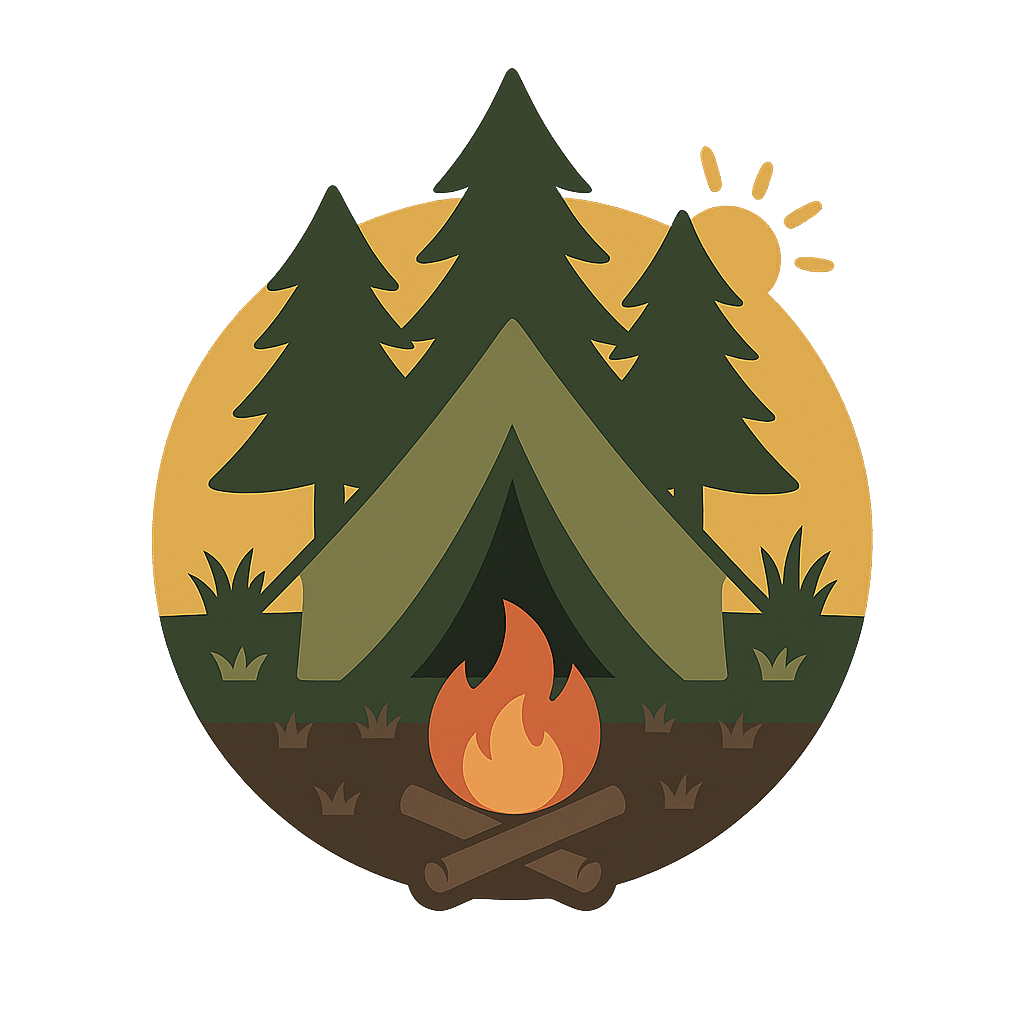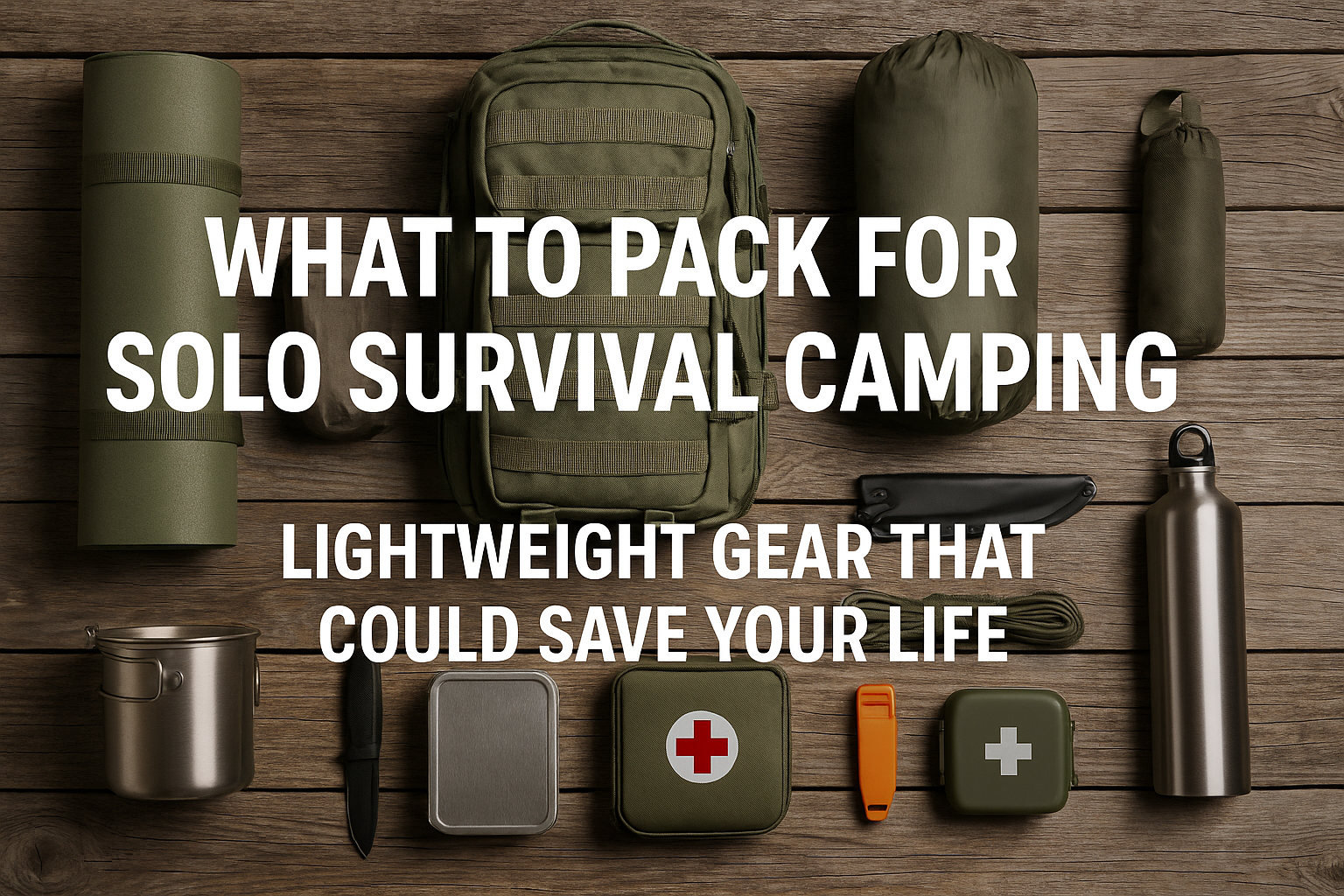When you’re camping alone, your pack isn’t just your gear —
it’s your emergency shelter, your water source, your hospital, your only backup plan.
In solo survival, weight is the enemy.
But forgetting critical gear will kill you faster than carrying a few extra ounces.
Here’s the non-obvious guide to what you must pack for solo survival camping —
gear designed to be lightweight, compact, multi-purpose, and life-saving when you’re alone with no help coming.
🛡 Core Survival Rule for Solo Camping
✅ Every item must serve at least 2–3 life-saving functions.
✅ Every item must be deployable alone — even if you’re injured, cold, exhausted, or wet.
✅ Every item must be packable in less than 20% of your total loadout weight.
This isn’t about “comfort” camping —
this is loadout strategy for surviving cold, injury, dehydration, and disorientation.
🎒 Shelter and Core Body Protection (No Tents, No Glamping)
You are protecting your core temperature first — not “camping.”
✅ SOL Escape Lite Bivvy Sack (~5 oz)
✅ 5×7 Ultralight Silnylon Tarp (~8 oz)
✅ 4 titanium stakes + 20 feet Dyneema cord (~3 oz total)
Why this combo:
- Bivvy = instant sleeping bag + wind shelter
- Tarp = shelter from rain, snow, wind when trees, rocks, cliffs available
- Total shelter weight: Under 1 lb
Field Hack:
Set up tarp lean-to tied to your motorcycle, trekking pole, or tree + bivvy inside = storm shelter in under 5 minutes solo.
You aren’t building a hotel. You’re building a heat trap.
🔥 Fire Starting and Heat Production (Triple Redundancy Required)
✅ Ferrocerium rod (in pouch, not buried deep)
✅ Mini Bic lighter wrapped in 3 feet of duct tape
✅ Pre-made waxed cotton balls in a waterproof film canister
Why:
- Ferro rods work when soaked and cold.
- Bic is faster when conditions allow.
- Waxed cotton = almost guaranteed flame even in rain.
Field Tip:
Sew a ferro rod loop inside your jacket — you should never have to dig for fire tools while shivering.
💧 Water Acquisition and Purification (Micro Redundancy)
✅ Sawyer Squeeze Mini Filter (~2 oz)
✅ Chlorine Dioxide Water Purification Tablets (backup)
✅ Collapsible 1L Water Pouch (~1 oz)
Why:
- You must be able to drink from puddles, streams, and rainwater safely.
- One method can break; two methods = survival certainty.
Advanced Field Hack:
Always cold-soak oats or ramen overnight in your water pouch to save energy and calories.
🥣 Survival Food (Dense, Uncooked, No-Fuel Meals)
✅ Almond butter or Trail Butter pouches
✅ Oil-packed tuna pouches
✅ Dehydrated cold-soak oats + dried fruits
✅ High-fat survival bars (not candy bars)
Why:
- Eatable without fire
- Calorie-dense and high-fat for cold endurance
- Stomach-safe under stress and exhaustion
Packing Tip:
Vacuum-seal cold-soak oats + dried fruits into daily ration bags.
🔪 Cutting and Field Repair Tools
✅ Mora Eldris or similar ultralight fixed blade (~2.8 oz)
✅ Ultralight trauma shears (can cut tarp, paracord, clothing)
✅ Tenacious Tape (~1 oz roll)
Why:
- Knife for real tasks (wood, food, repairs)
- Shears safer for awkward field emergencies (injury, splinting)
- Tape for fabric rips, tarp repairs, jacket patches.
Emergency Field Tip:
Shears can also cut rope fast for shelter if your fingers are frozen and fumbling.
🧠 Navigation and Emergency Signal
✅ Suunto A-10 Compass (~1 oz)
✅ Micro Signal Mirror (~0.5 oz)
✅ Pea-less Whistle (~0.5 oz)
✅ Garmin inReach Mini (optional but life-saving)
Why:
- Phones die. GPS fails.
- Compass, mirror, and whistle can save your life if you lose trails or get injured.
Bonus Hack:
Signal mirrors can flash sunlight 20+ miles — often farther than you can walk in 12 hours.
🧤 Personal Warmth and Layer Management
✅ Merino Wool Beanie (~2 oz)
✅ Glove Liners (~2 oz)
✅ Ultralight Puffy Jacket (synthetic fill, ~12 oz)
✅ Rain Shell Jacket (hard shell, ~6 oz)
Why:
- Head, hands, and core protection without heavy parkas.
- Rain shell doubles as windbreaker and moisture barrier.
Survival Tip:
Use puffy jacket inside bivvy sack to trap warmth faster — not over it.
🥶 Emergency Warmth Kit
✅ 3–4 Chemical Heat Packs (hand warmers)
✅ Spare wool socks (keep inside sleeping kit)
✅ Emergency Mylar Blanket
Why:
- Heat packs buy time if you can’t build fire.
- Dry socks are mandatory if boots get wet.
- Mylar blanket adds extra radiant heat layer or makes backup shelter.
Pro Survival Trick:
Stuff heat packs inside your crotch area (femoral arteries) — fastest way to raise core body temp.
📦 Compact Medical Survival Kit (Real Trauma Gear)
✅ Israeli Pressure Bandage
✅ Tourniquet (SOFT-T Wide)
✅ Blister Kit (Compeed + Leukotape)
✅ Iodine Swabs
Why:
- Blood loss and broken limbs are bigger killers than cold.
- Blisters cripple solo campers before thirst or hunger.
Field Tip:
Use Leukotape preemptively when you first feel hotspots — don’t wait for blisters.
🛠 Field Repair Kit
✅ 2–3 heavy-duty zip ties
✅ Mini roll duct tape
✅ Tiny sewing kit (needle, thread, safety pins)
Why:
- Fix broken zippers, ripped tarps, cut tent cords, broken backpack straps.
Survival Tip:
Zip ties can also act as splints, cuffs, or fast shelter reinforcement.
🛡 Full Quick Checklist (Life Priority Order)
| Priority | Gear You Must Carry |
|---|---|
| Core warmth & shelter | Bivvy + tarp + ultralight puffy |
| Water acquisition | Filter + tablets + collapsible pouch |
| Fire making | Ferro rod + lighter + waxed cotton |
| Navigation & signals | Compass + mirror + whistle |
| Emergency first aid | Trauma bandage + tourniquet |
| Survival food | High-fat, no-cook, cold-soak foods |
| Field repair tools | Knife + tape + sewing kit |
🌄 Conclusion: Pack Like Your Life Depends on It — Because It Does
Solo survival camping isn’t about feeling free.
It’s about engineering your own backup plan when there’s no cavalry coming.
Every ounce of smart gear you pack is an ounce of death you push farther away.
You aren’t just packing for adventure — you’re packing for survival, self-rescue, and nights you never thought you’d face.
Light.
Lethal.
Loaded for the worst.
That’s how a real solo camper survives.

